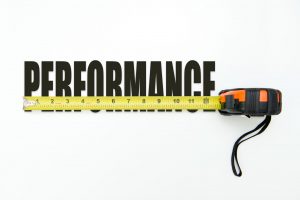Measurement needs rebranding
Consider these suggestions on how to reframe this crucial part of the PR process.

Anthropologists will tell you that baby dogs and cats have evolved over the years to be to be intentionally irresistible. By being impossibly cute when they are young, they are more easily assimilated into human society, enhancing their chances of surviving, thriving and perpetuating the species. Anyone who has adopted a small critter will know that nature is right.
Who can resist a puppy? Apparently not even the most hard-core hound hater.
For about 60 years, I hated dogs. It was a learned response; I’d been bitten and attacked and knocked over repeatedly by numerous members of the species. To me they were all smelly, loathsome creatures—far too co-dependent for my liking. Cats were my kind of pet.
Then, I met Princess Leia and I fell in love, unconditionally and forever. She could poop on my rugs, dig up my flower beds, bark me out of bed at 4 a.m.—it didn’t matter. I was her biggest defender and supporter until the day we lost her to cancer. And the lack of her presence is intolerable.
Which is why I, the dog-hater, am now shopping for a new puppy.
As I pondered my metamorphosis, it occurred to me that many folks feel about measurement the way I used to feel about dogs (and yes, how many people feel about cats). They see it as a loathsome thing, the love of which is incomprehensible, that also takes too much work and costs too much money. Which is why measurement is too often relegated to the bottom of the to-do list, a task assigned by some higher-up that is invariably seen as the heaviest lift and least fun task on the list.
The question is, how do you make math and data as irresistible as a puppy?
Here are a few ideas:
1. Call it “assumption testing” and “market research.”
Too many campaigns are launched because someone higher up the ladder comes up with what they see as a “great idea” that you get to implement. The problem is that ideas are only great if they are based on solid assumptions, which is why any good communicator knows that when you begin a new campaign or initiative, you need data in order to create an effective plan.
Good, relevant, and regular measurement provides that data. It will tell you what has worked or not worked in the past.
So, when some muckety-muck comes into your office with an order to run a misguided campaign your response should be, “Wouldn’t you like to test those assumptions? Give me a chance to look at some data and we’ll get back to you with our recommendations.”
Now you’ve become part of the strategy, instead of being relegated to justifying the expense. And you’ll get your benchmarking metrics funded.
2. Call it “risk avoidance”—the accountants will love it.
Princess Leia’s barking was loud and incredibly annoying, but generally there was a reason for it. Most of the time, she was alerting me to the fact that someone was in my driveway, or that a predator was about to consume my chickens.
Regular measurement performs a similar professional heads-up function. If you know what is “normal,” you’ll also be able to spot the abnormal. So, before a potential crisis erupts, regular reporting metrics will alert you to potential problems before they become your worst nightmare.
Additionally, measurement enables you to avoid wasting money or courting disaster. Having regular standardized and predictable metrics shows you what’s working and what isn’t.
To paraphrase a Mastercard ad: “Having a good measurement system in place: A rounding error in the company budget. Knowing how to stave off a crisis: Priceless.”
3. Still not cute enough? Call it “opportunity identification.”
Too often measurement presentations sound like a request for a bigger budget. Instead, you can use measurement data to point out an opportunity: an issue where the competition is absent, or where a potential market is ignored.
One of my clients regularly looks at their share of voice in specific industry topics. When there’s a new hot topic or issue that is relevant to their business, they jump on it before anyone else does. They analyze their resources, determine if they can offer a solution or a unique perspective and then identify relevant spokespeople to talk about it. Now they’re seen as a crucial element of market development and revenue generation.
4. An even more irresistible moniker: “Investment in brand reputation.”
Measurement ensures that the communications you do and the content you produce are effective in achieving your goals, which more often than not comes down to building or protecting your brand. Unless you measure the impact of what you are doing, you have no idea whether your efforts are helping or hurting your brand—until it’s too late. So, pitch your program as an investment in the future, rather than a cost for examining the past.
Within the last month I have used measurement data to do all of the above. Yes, I know measurement is not as cute, or furry, or as good in a selfie as a puppy or a kitten. But it can be just as reliable and just as welcome when you’re feeling overwhelmed.
Katie Delahaye Paine is the CEO of Paine Publishing LLC and publisher of The Measurement Advisor. Find her on Twitter @queenofmetrics.







